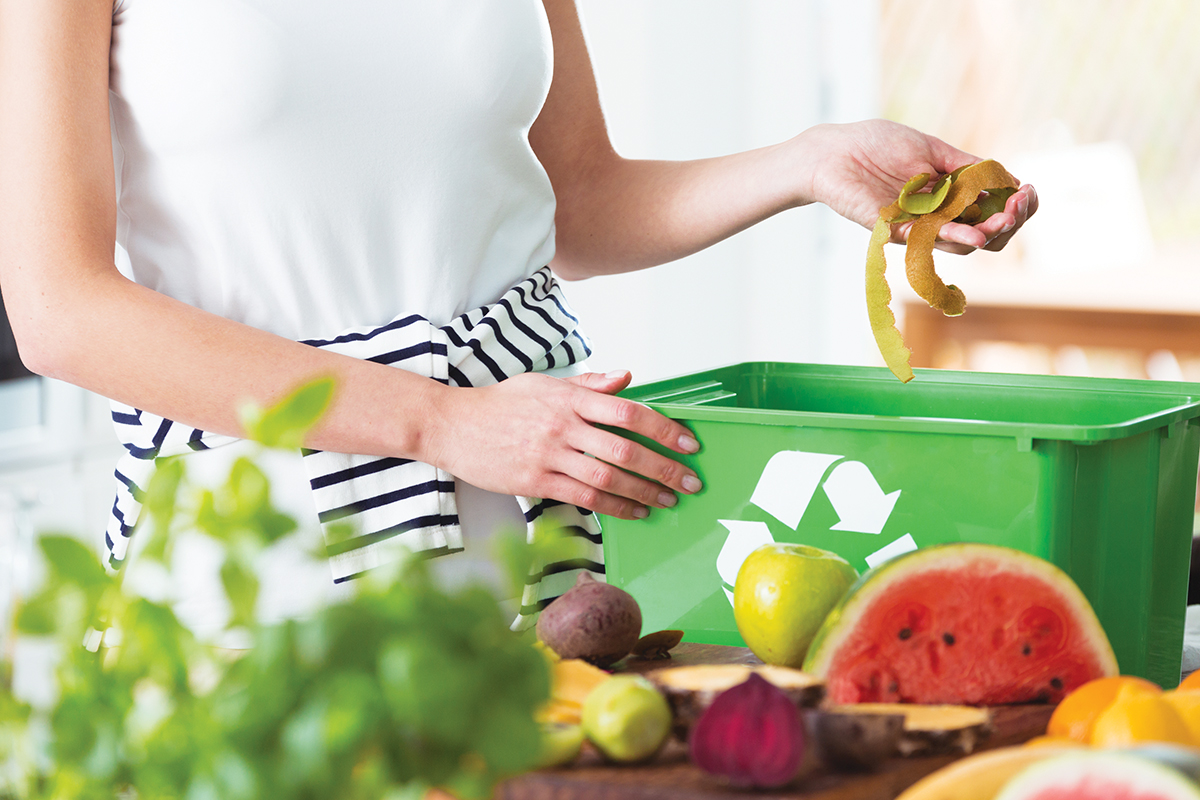WRITER | PAM TOIGO
There are many good reasons to compost: save money, save resources, improve your soil, and reduce your impact on the environment. Just because the snow has started to fly outside, you don’t need to give up your composting efforts. Read on to learn more about composting and how you can successfully continue the process indoors in the winter.
What is compost? Compost is organic material that can be added to soil in the spring to help plants grow. Essentially, compost is natural, organic fertilizer.
Why should I compost indoors? Composting enriches the soil, helping to retain moisture and suppress plant diseases and pests. It reduces the need for chemical fertilizers, thus protecting the environment and your own personal health. It reduces methane emissions from landfills and lowers your carbon footprint. Composting indoors in the winter is easy, and a great way to get rid of your kitchen scraps and junk mail.
How do I make compost? Composting requires three basic ingredients: browns (material such as dead leaves, branches, and twigs), greens (like grass clippings, vegetable waste, fruit scraps, and coffee grounds), and water. Combining the correct amount of browns, greens, and water is important for compost development but does not require a lot of exactness. All of this can be done indoors in a small bin that can fit right under your kitchen sink.
What is the best way to compost indoors? There are several different methods for composting indoors. Kate Bartley, owner of The Silo Hydro Farm in Ada, recommends vermicomposting, or composting with worms. But don’t let the thought of worms in your kitchen freak you out, notes Bartley. The process takes about three to six months to break down your plant-based waste, and there is no smell.
“Vermicomposting is clean and hygienic. The process involves red wriggler earthworms that eat kitchen scraps, such as vegetable peels, egg shells, tea bags, coffee grounds, even junk mail, and quickly turns it into nutrient-rich compost that can be fed back to indoor plants or used to nourish an outdoor vegetable garden in the spring,” states Bartley. The bins fit right under your counter, so they are convenient to get to but out of sight.
“Vermicomposting is fun for the whole family,” says Bartley. “Kids love feeding the earthworms, and it’s a great way to involve the entire family and teach environmental responsibility and sustainability.”
If you want to include all of your scraps, including meat, or don’t like the idea of worms in the house, you can try bokashi composting. Bokashi is a decomposition process originating in Japan that uses no air and actually ferments your scraps. This process has very little smell and can also fit in a bin under your sink, although the process requires two steps, with the second taking place outside. You will also need special bokashi bran, which can be purchased commercially or made at home. It takes four to six weeks to break down waste using this method.
How do I control the smell of indoor composting?
There are several tips you can follow to avoid a smelly compost:
For vermicomposting:
– Refrain from composting extra-smelly kitchen scraps like onions.
– Use paper scraps (like junk mail) in your compost to soak up any smells.
– Turn the contents of your bin often.
– As the bin fills, bag it up and keep it in the refrigerator or freezer until you are ready to make a run out to the outdoor compost pile to dump it.
– Dump the bin often (once or twice a week) into your outdoor compost pile.
– Compost small scraps as they will degrade faster.
– Use liners (made of cornstarch) or charcoal made specifically for indoor compost bins to help soak up any odors.
For Bokashi:
– Make sure you don’t allow air into the fermenting bucket.
– Make sure the bran completely covers the waste. If it starts to smell, add bran (you can’t use too much).
– Drain the bokashi bucket often.
How do I get started? For vermicomposting, several models of worm bins and regular composting bins are available online, or you can DIY. Bartley likes The Worm Factory model, which is made of recycled plastic and comes with complete instructions for a successful start. A little research online will give you the detailed information you need if you are not familiar with the composting process.
Like vermicomposting, bokashi composting buckets can be purchased online, or you can make them yourself.
There are many resources online to research what method is the best for you. Whatever compost vessel or method you choose, a winter of indoor composting will help the environment and boost your garden’s potential come spring. So don’t be afraid…compost the winter away!








